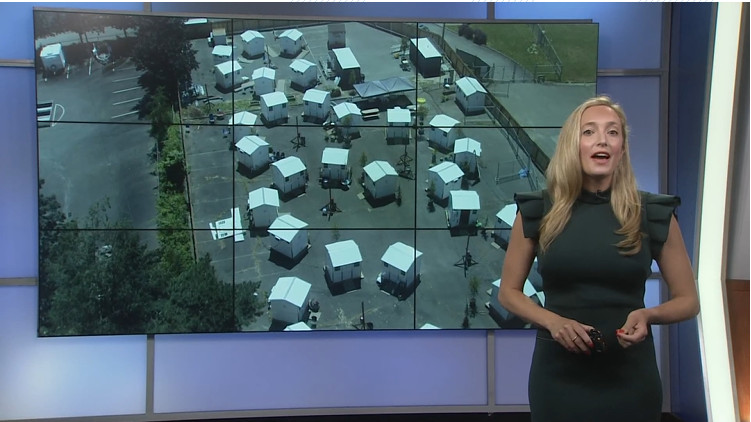The number of people living on the streets far exceeds shelter bed capacity, yet some homeless villages consistently have empty beds.
PORTLAND, Ore. — Thousands of people live on the streets of Portland, yet some of the city’s homeless villages consistently have empty beds.
 A Point-In-Time survey earlier this year counted more than 6,600 homeless people in Multnomah, Washington and Clackamas counties, though the number is likely much higher — and either way, the shelter bed capacity is much lower.
A Point-In-Time survey earlier this year counted more than 6,600 homeless people in Multnomah, Washington and Clackamas counties, though the number is likely much higher — and either way, the shelter bed capacity is much lower.
That begs the question: How come homeless villages aren’t always full?
Agape Village is a tiny house village off Southeast Powell Boulevard that’s run by the Central Church of the Nazarene. It opened three years ago as a place for people on the streets to stay while they work with case managers to find permanent housing.
“The most we’ve ever had here at one time was eight. Right now we have six,” said Matt Huff, who runs the village.
He said the village has never reached full capacity. In the past couple years, there’s been about 125 applications, and only about a third have moved in.
“Not everybody’s comfortable with the structure,” he said. “It’s transitional. Some of the folks that we’ve talked to aren’t looking for transition they’re looking to just live in a village.”
To stay at Agape Village, people must go through background checks, be sober and are only allowed to stay for about 12 months.
“It’s frustrating honestly. It’s disheartening at times,” Huff said of the lack of villagers. “We’ve put in quite a bit of work in the village, and we want to help people.”
But Huff isn’t alone. In Southwest Portland, the city just opened its first Safe Rest Village. The organized camp is located at the former Sears Armory. It’s meant to get people off the streets and into permanent housing, but it took more than a month to reach full capacity.
After reaching out to 10 organized homeless villages, KGW found it’s not uncommon for these types of emergency shelters to have empty beds, and the reason for this isn’t black and white. There are many guidelines that villagers at certain sites must follow, such as having a curfew and being sober.
“Shelter doesn’t end people’s homelessness and not everybody wants to be in a shelter and it’s not required for you to go through a shelter to be able to move back into housing,” said Shannon Singleton, the head of the Joint Office of Homeless Services.
The city’s Safe Rest Village is low barrier to entry, meaning adults can move in with their family and pets, but weapons and drugs aren’t allowed. It’s run on referrals through the city’s Street Services Coordination Center, which is made up of first responders on the ground helping homeless people.
“We’re not putting any sorts of screening or anything in front of people to access. It’s like an emergency shelter,” Singleton said.
Last month, Safe Rest Village staff told KGW only 16 out of 30 beds were filled. About a week ago, the village reached full capacity.
“Honestly, it’s just about the referral process, and the ramp-up there wasn’t anything particularly reported to me that were barriers to moving to full occupancy,” Singleton said.
“For people who have been on the streets for a long time, it’s a totally different way of life,” said Aimee Miller, who works at Agape Village.
Miller said she was homeless for about five years and was addicted to heroin.
“The only way to get a better life is to make that first decision to change something that you don’t want to change … It is frustrating seeing people not want to take advantage of that and continue to make the choices to be stuck in the cycle that they’re in,” she said.
“It’s going to take a little bit of everything,” added Huff. “I think there needs to be the low-barrier options, there needs to be higher-barrier, there needs to be congregate, there needs to be village and then there needs to be that professional level of care that not every village or shelter can provide.”
There are other villages throughout Portland that don’t have a problem finding residents.
RELATED: As Portland embraces tiny home pods, a study outlines a roadmap for successful homeless villages
Dignity Village in Northeast Portland has a waitlist. One difference in their rules is that they allow people to drink alcohol inside the tiny homes. The same goes for Parkrose Community Village, run by WeShine. They too have a waitlist.
Saint John’s Village in North Portland is another one that has a waitlist, but they don’t allow drugs or alcohol, and villagers must go through background checks.

